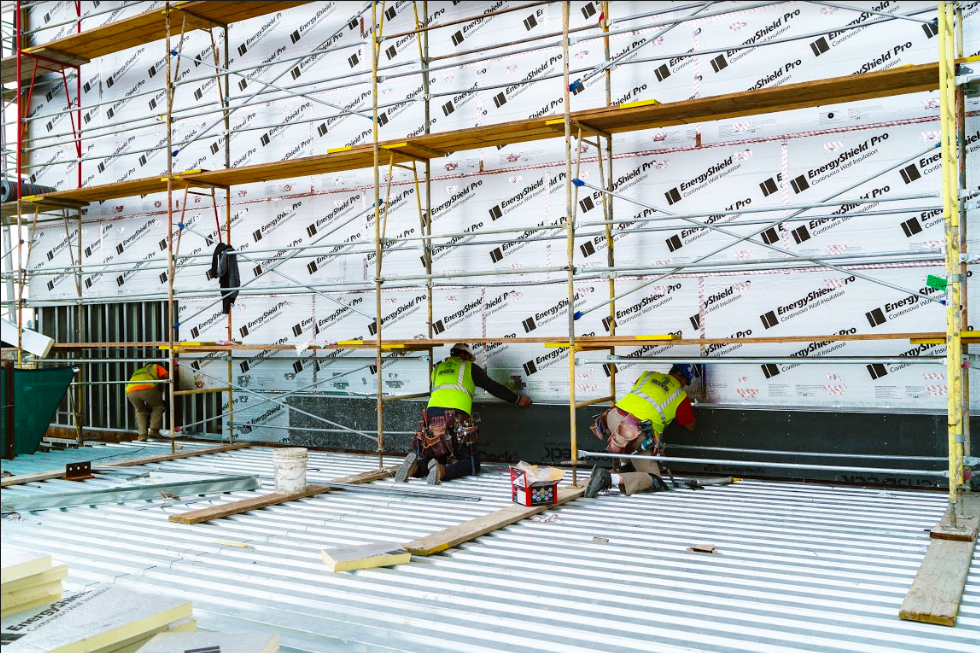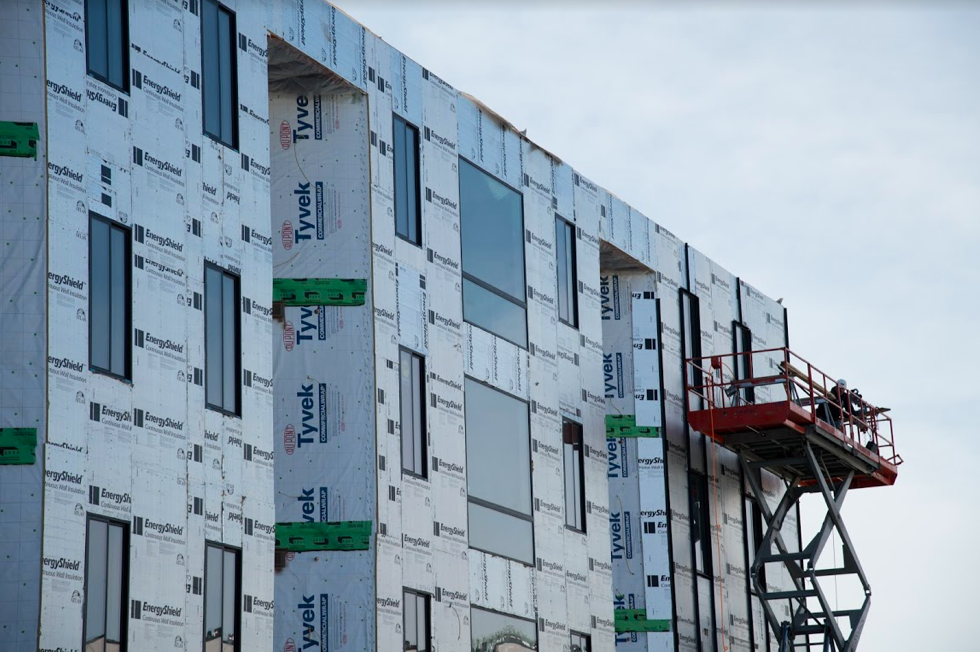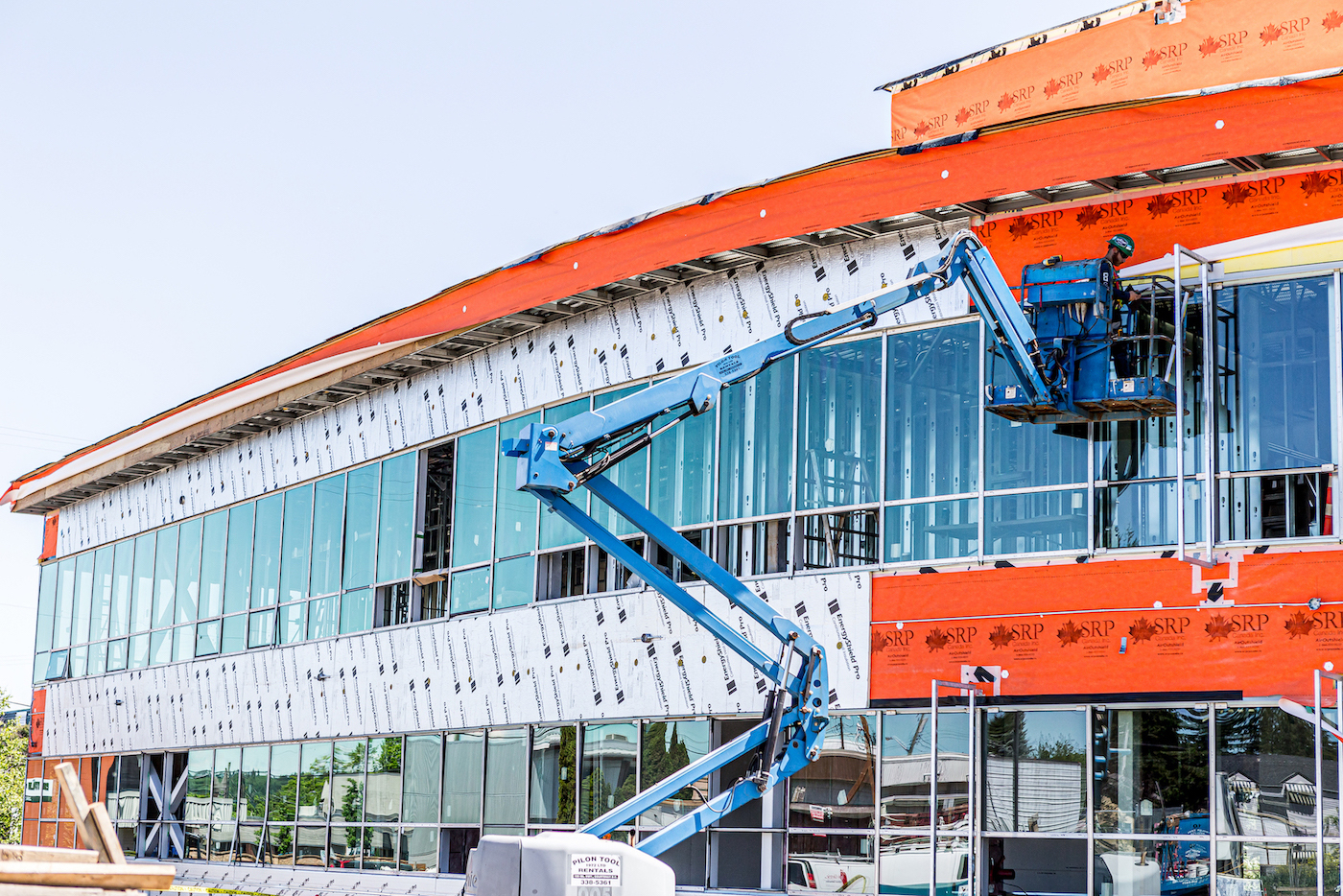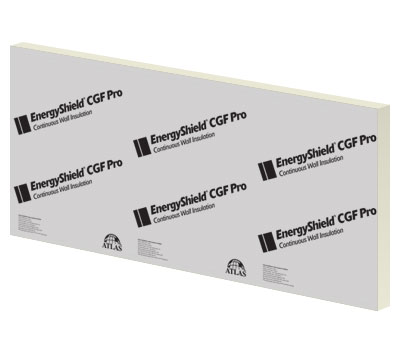
What Is Continuous Insulation?
When you think about insulation, you probably think about itchy fiberglass batts stuffed between studs. That kind of insulation is a common product used in construction that creates what is known as thermal breaks or thermal bridging: pathways for energy to escape through uninsulated studs.
With modern building codes, insulation requirements have evolved, and new buildings today need to use what is known as continuous insulation. Continuous insulation is often a rigid foam insulation board that can be installed outbound of your sheathing, to create a continuous insulation layer, minimizing thermal breaks.
Continuous wall insulation types, like polyisocyanurate, provide additional benefits beyond their thermal properties, such as having the ability to serve as the weather-resistive barrier (WRB), an air barrier and a vapor retarder. So choosing the right continuous insulation will not only drastically decrease the thermal bridging of your building, but can also reduce the number of products needed in your assembly while helping maintain a healthier indoor environment.
Benefits of Continuous Insulation

Along with its thermal properties, and its ability to act as a water- and air-barrier, continuous polyiso insulation offers numerous benefits, including:
- High R-value
- The widest range of code-compliant assemblies with regard to fire, vapor, moisture and thermal properties
- Thinner wall profiles
- Virtually no global warming potential
- Zero ozone depletion potential
Atlas EnergyShield provides additional environmental benefits, including GreenGuard Gold Certification, mold resistance certification, and is available as an NH product to support Red list Free, Declare and Living Building Challenge (LBC) projects.
With continuous insulation, you can expect to see lower energy costs through reduced thermal bridging. And the time and cost of installation can also be decreased. Multi-functional continuous polyiso insulation wall systems mean you’ll need fewer materials, which translates to less time for crews to install them.
Best Practices for Continuous Insulation

Choosing Insulation
When it comes to choosing the right continuous exterior wall insulation, consider a few best practices:
- Choose a type of insulation that does more than insulate. Products like polyisocyanurate wall insulation also act as a water-resistive barrier (or WRB), air barrier and vapor control layer. They’re also environmentally friendly, with virtually no global warming potential.
- Choose a product that will not only last once it’s installed, but will also stand up to the rigors of the job site. A construction site is a busy, fast-moving place. Make sure your insulation can be handled easily and withstand the elements while it’s being installed.
- Choose a continuous insulation wall that is easy to cut and carry. These products will result in less waste and save you time and money.
Storing Continuous Insulation
If you’re purchasing large quantities of continuous wall insulation, or won’t be installing it all right away, make sure you follow proper procedures for storing it. Although it is water-resistant, continuous foam insulation must be stored properly.
Best practices for storing your foam insulation include:
- If possible, store product indoors on risers elevated at least four inches above floor/grade to ensure proper air circulation.
- If storing polyiso outdoors, completely protect it from moisture using a waterproof cover like a tarp. The temporary factory applies packaging should be slit or removed to prevent accumulation of condensation.
- If the storage building’s interior is not protected from exterior moisture, protect your insulation as if it were being stored outdoors.
- Do not allow standing water to collect on top of the tarp or other waterproof protection or below the insulation.
Installing Continuous Insulation
Best practices for installing your continuous exterior insulation will depend in part on the type of insulation and other building materials being used. Always follow manufacturer’s instructions to ensure your insulation is installed properly in order to maximize performance.
In general, best practices for installing continuous insulation like EnergyShield products include:
- Install your insulation over a clean, dry surface to avoid trapping moisture between wall assembly layers.
- Follow the manufacturer’s instructions regarding exposure after installation.
- Select fasteners that are the appropriate type and length for the wall assembly.
Code Compliance for Continuous Insulation

Not all energy codes are created equal and not all jurisdictions follow the same code requirements. Building codes define minimum requirements for compliance. You can exceed the required code by adding or increasing continuous insulation resulting in a higher-performing building.
In terms of energy codes, here are a few to consider:
- ASHRAE 9.1: https://www.ashrae.org/technical-resources/bookstore/standard-90-1
- IECC 2018: The 2018 International Energy Conservation Code includes provisions for continuous insulation in residential applications. The code includes minimum R-value requirements for continuous insulation used in exterior walls and a requirement to minimize thermal bridging.
- IGCC: https://www.iccsafe.org/products-and-services/i-codes/2018-i-codes/igcc/
Whenever you’re discussing code compliance, make sure you understand not only national and international code requirements, but also any state and local codes as these can vary significantly from place-to-place.
How Atlas EnergyShield Products Can Help

Atlas EnergyShield wall insulation products are made with a polyiso core, which achieves a high R-value with minimal material thickness. This makes it a high-performing and cost-effective option for both residential and commercial applications.
It is durable, lightweight and easy to use, and is compatible with most standard cladding systems, including siding, metal, stone, brick and stucco. EnergyShield products are also compliant with national and international energy and fire protection codes for continuous insulation.
For more information on how Atlas EnergyShield can keep your next project code-compliant and performing at the level your customers expect, visit the Atlas website.
